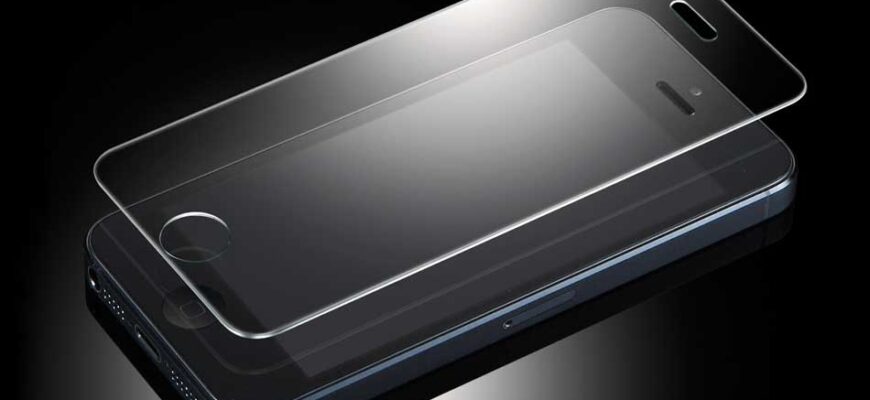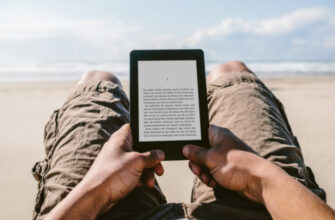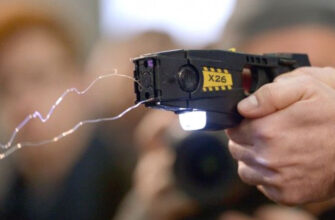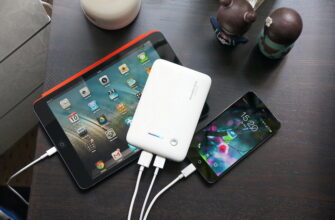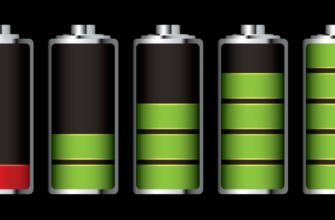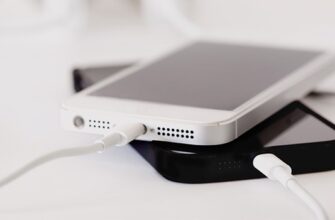When choosing a protective glass, you should pay attention to its compatibility with a smartphone and some other technical and operational characteristics.
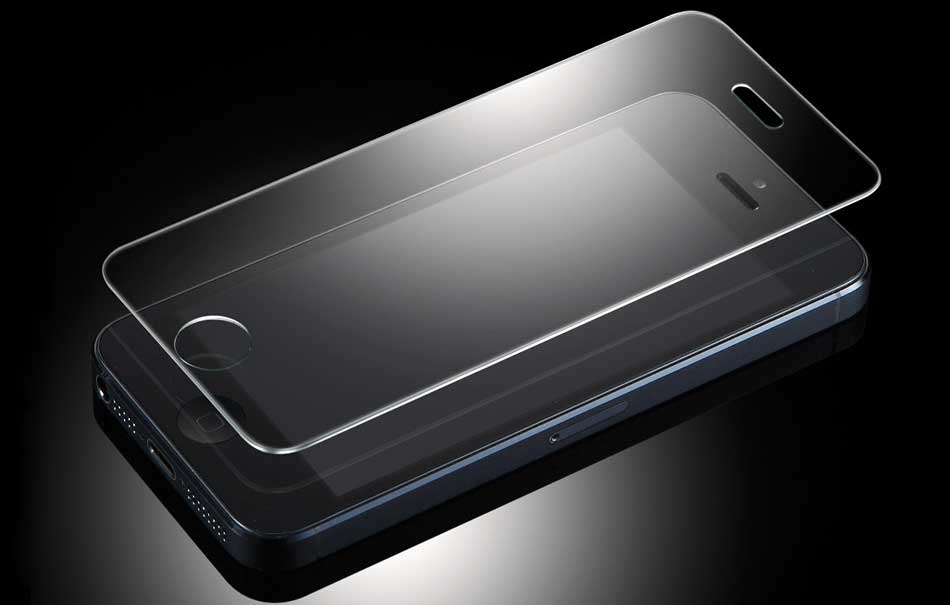
How to choose a protective glass for your smartphone: what to look for?
The main criteria for choosing a protective glass are:
-
Compatibility of protective glass and smartphone;
-
Safety glass construction (number of layers and types);
-
Thickness;
-
The presence of an oleophobic coating;
-
Glass strength;
-
Glass type (glossy or frosted).
There are also special types of glasses, but you should choose them only if you plan to use them in any special conditions.
Main selection criteria
Compatibility
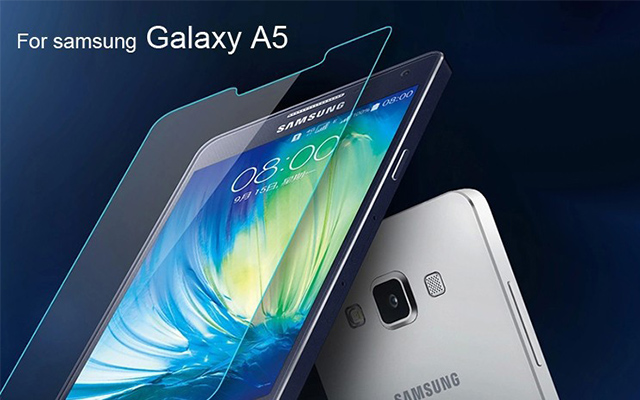
Compatibility is the most important criterion when choosing a safety glass. The fact is that in addition to the display, this accessory also covers some other functional elements of the smartphone located on the front panel. For example, a proximity sensor.
-
The proximity sensor is designed to turn off the smartphone screen while talking on it and prevent accidental clicks. It works in the following way – it sends out an optical or ultrasonic wave, and then measures the time it took for it to reflect from the object. For example, laser rangefinders work in much the same way.
-
The glass is recognized as an 'object' by the proximity sensor. And it closes this sensor, the smartphone will turn off the screen immediately after pressing the call button. This is actually inconvenient as you can only 'hang up' on the active display. In addition, some modern smartphones use a proximity sensor to enable Always On Display or Ambient Display.
-
Therefore, all protective glasses have a special slot or hole for the proximity sensor.
-
Finally, the protective glass can sometimes cover the front speaker, resulting in reduced audibility of the caller.
-
Thus, by sticking an incompatible glass on a smartphone, instead of protection, you can get many problems associated with the operation of the device.
You can find out about the compatibility of a smartphone and glass from the technical characteristics of the latter.
In addition, safety glasses are not recommended to be 'modified' in any way at home. Attempts to cut or saw the accessory will break the accessory. As a consequence, it is very important to choose glass that is compatible with the smartphone you are using.
We should also mention glasses for smartphones with a 2.5D screen. They should also be 2.5D – that is, with curled edges. In this case, they will protect the ends of the display from side impacts.
Safety glass design
Usually protective glass for smartphones is a multi-layer fabric. It includes the following layers:
-
Kleeva. Most often, silicone is used to glue the accessory to the smartphone display. This material provides a sufficiently tight fastening that, if necessary, can be easily destroyed by simply prying the glass over one of the edges. Accessories with a silicone fastener are recommended;
-
Restraining. This layer is usually made of various polymeric materials and is a dense, flexible film. It is designed to prevent the scattering of glass fragments in case of damage – for example, in the event of a fall;
-
Anti-glare. This layer 'brightens' the smartphone screen, protecting it from reflections. Thanks to it, the display retains bright colors and readability even in direct sunlight;
-
Protective. As the name suggests, this layer is designed to prevent scratches, chips, or other damage. When the strength of glass is indicated, the strength of this particular layer is given;
-
Oleophobic coating. This is a special coating that makes it easier to slide your finger across the screen, as well as to care for it – most of the dirt from the glass surface is removed with a simple movement of a dry cloth.
It is this configuration that is found in most quality safety glasses, since it provides the best performance.
Glass that is not equipped with any of these layers is not recommended for purchase.
Glass thickness
Its mechanical strength partly depends on the thickness of the glass. However, this parameter directly determines only the resistance of this accessory to various shocks. The most optimal glass thickness is 0.2-0.35 mm.
-
Thinner glasses are designed to protect against minor scratches only. Frontal (front) damage, these accessories simply do not survive. Even a slight blow will damage the glass.
-
Thicker glasses provide good protection against various frontal impacts. Even severe damage will not damage the accessory. However, thick glasses do not 'survive' side impacts very well and are easily cracked from seemingly light collisions at the ends.
To fully protect your smartphone, you can purchase thick glass and a bumper that covers the end faces of the front panel. The device can then survive face-down falls on asphalt or similar surfaces without protruding edges. The thin protective glass is rather intended to prevent scratches.
Oleophobic coating
The oleophobic coating, as the name suggests, is designed to prevent greasy prints. In fact, it does not provide complete protection against glass contamination, but it greatly simplifies their care. Fingerprints and other 'stains' can be easily removed from the surface of this accessory with a special dry cloth.
Plus, the oleophobic coating makes sliding your finger on the screen smoother and more enjoyable. Therefore, if you are used to typing with a swipe on the keyboard or often browse long lists (for example, feeds on social networks), such an 'add-on' is more than recommended.
Unfortunately, the oleophobic coating is prone to abrasion. Over time, it spontaneously removes itself from the glass surface, especially in the keyboard area (if the user types a lot). It is impossible to restore the oleophobic coating; you only need and exclusively replace the accessory.
On average, the oleophobic coating 'lives' for about 3-4 months even in the best glass models.
Glass strength
The strength of glass is measured in special units called H. However, it determines its resistance not to impact, but to 'scratching' mechanical influences. So glass with a high hardness index – for example, 8H or 9H – can also easily break if it is in strong contact with a pointed object. But such an accessory is quite difficult to scratch, even if you carry a smartphone in one pocket with keys and your favorite nail.
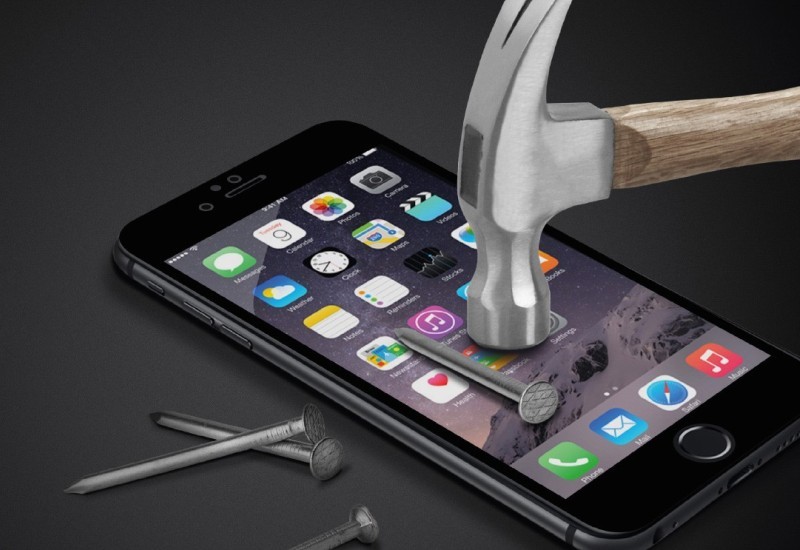
!
The most optimal glass hardness is 8H or 9H.
Glass type
Protective glasses can be glossy or matte. This parameter largely determines the performance of the accessory.
-
Glossy safety glasses are the most common type. In fact, almost all of these accessories are of this type. Glossy glass has high transparency (up to 98% for the highest quality models) and does not change the perception of the image on the screen. Nevertheless, it is less protected from glare, and therefore, in direct sunlight, the 'picture' on the display may lose readability.
-
Frosted protective glasses are less common and in most cases are more expensive than glossy ones. The main advantage of such accessories is that they are better able to withstand the action of direct sunlight, and therefore the image on the display remains readable even in summer noon.
Nevertheless, low-quality matte glasses are prone to graininess – at a certain angle the image on the screen is visually deformed, 'crumbling' into separate elements.
Choosing the type of glass – matte or glossy – is based on your preferences and the planned use of the smartphone.
Top manufacturers
Among the manufacturers of protective glasses, there are several companies that produce high-quality accessories:
-
Mokolo;
-
Ainy;
-
LuxCase;
-
Brando;
-
Nillkin.
How to stick protective glass
The procedure for gluing the protective glass is quite simple. This requires only a little care.
-
Choose the least dusty room. Even a tiny speck that gets on the screen during the glass gluing process can significantly spoil the appearance of the attached accessory;
-
Take a plastic card. Banking, discount, etc. will do. You do not have to worry, during the gluing process it will not be damaged;
-
Thoroughly wipe the screen or the entire front panel of the smartphone with a damp cloth. If this comes with a protective glass, use it. If not, you can take some other, and preference should be given to napkins with alcohol impregnation;
-
Thoroughly wipe the screen or the entire front panel of the smartphone with a dry cloth. It is recommended to choose a 'cleaning agent' that does not leave lint or similar 'debris'. Often a dry napkin is supplied with a protective glass, but if it is not there, you can use any optical one;
-
Make sure the screen or front of your smartphone is completely clean. No dirt should remain on the main surface or on the edges;
-
Peel off the shipping tape from the protective glass on the adhesive side. It is usually marked with a '1'. Attention! Do not touch the adhesive side – prints cannot be removed from there;
-
Starting from some corner, place the glass against the screen or front of your smartphone and start gluing. To squeeze out the air, lean the outside of the plastic card against the attached 'corner' and slide it in the direction of gluing. Attention! Avoid bending the glass too much as this can lead to cracks;
-
After gluing the glass to the front panel or screen of your smartphone, remove the second shipping film (usually marked with a '2' symbol) from its surface.
-
Done! To remove the protective glass, it is enough to pry it off one of the edges with some thin and sharp object, and then gradually lift it up, not paying attention to the cracks that appear.
In the following articles, our experts will tell you how to choose a smartphone case and the secrets of choosing a phone battery.
Attention! This material is the subjective opinion of the authors of the project and is not a purchase guide.

